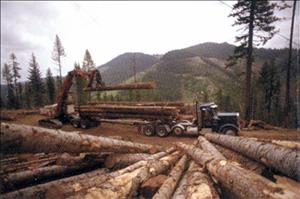On July 1, 1976, new forest practices rules that regulate logging and its impacts on the environment take effect. This is the first major change in the regulation of logging in 30 years. The regulations have been developed by the 11-member Forest Practices Board pursuant to legislation passed in 1973 and implemented after public hearings. The rules will evolve with scientific research, public interest, and with other regulations such as the Endangered Species Act.
In 1946, state law required reforestation as a condition of a logging permit, but compliance was uneven. In 1972, Congress passed the Clean Water Act, which regulated non-point-source pollution such as logging operations. The Washington Legislature passed the Forest Practices Act in 1973, which provided for the development of rules to guarantee sustainable yields for state, municipal, and private forests while protecting other resources. Loggers, environmentalists, other governmental agencies, treaty fishing tribes, and land developers all had a say in the process.
During the following decades, rules were added to cover scenic vistas, archeological resources, and threatened and endangered species.
Competing interests vied for attention and influence before the Forest Practices Board, resulting in an adversarial and contentious environment. Dissatisfied stakeholders took their cases to court. The board had to deal with contradictory evidence and assertions. Even when the board arrived at some decision, the affected parties could not count on the rules being sustained in court.
On Whidbey Island in 1977, a resident sued the state Department of Natural Resources to stop the sale of timber, alleging that the Department had not properly evaluated the environmental consequences (Noel v. Cole). The courts held that logging permits were not exempt from environmental assessment.
In July 1986, the Northwest Renewable Resources Center organized a conference among forest products interests, tribes, environmentalists, and government agencies to derive a new process. The result was the Timber Fish Wildlife Agreement, which provided for the parties to develop policy and regulations together, which then could be adopted by the state.

